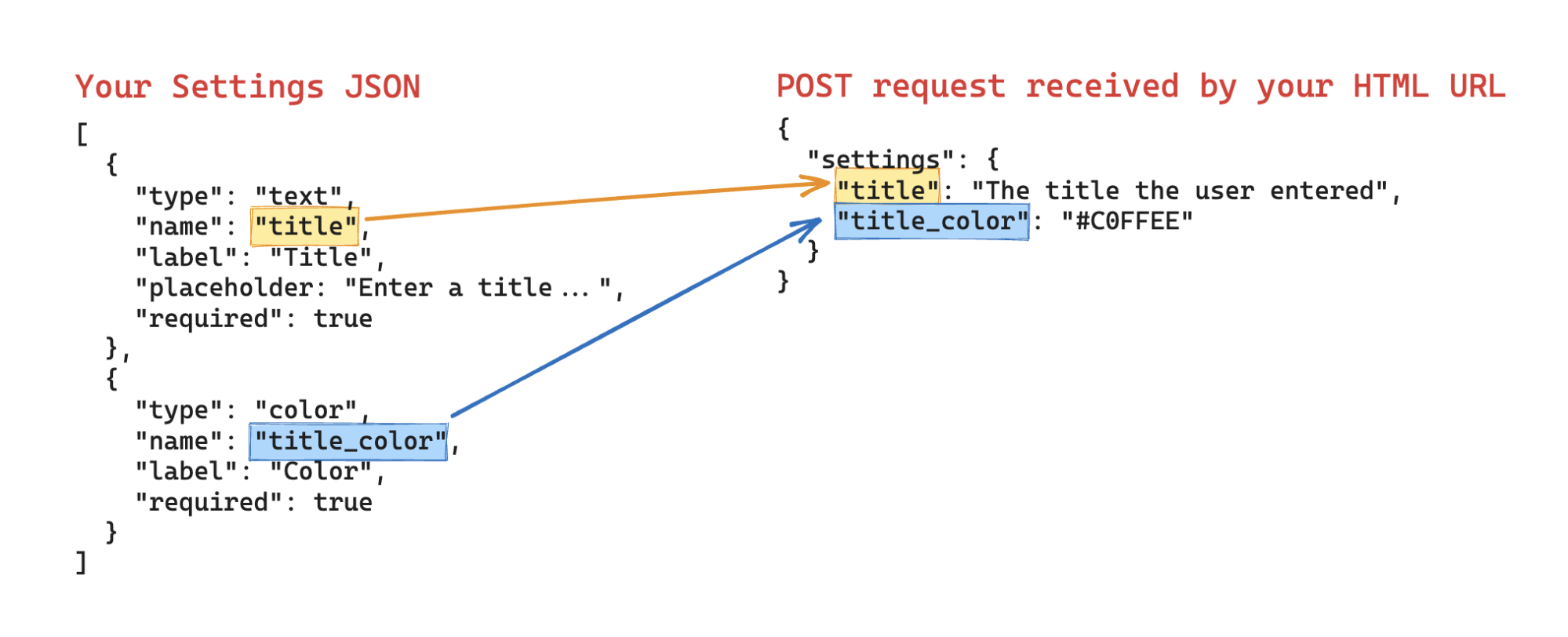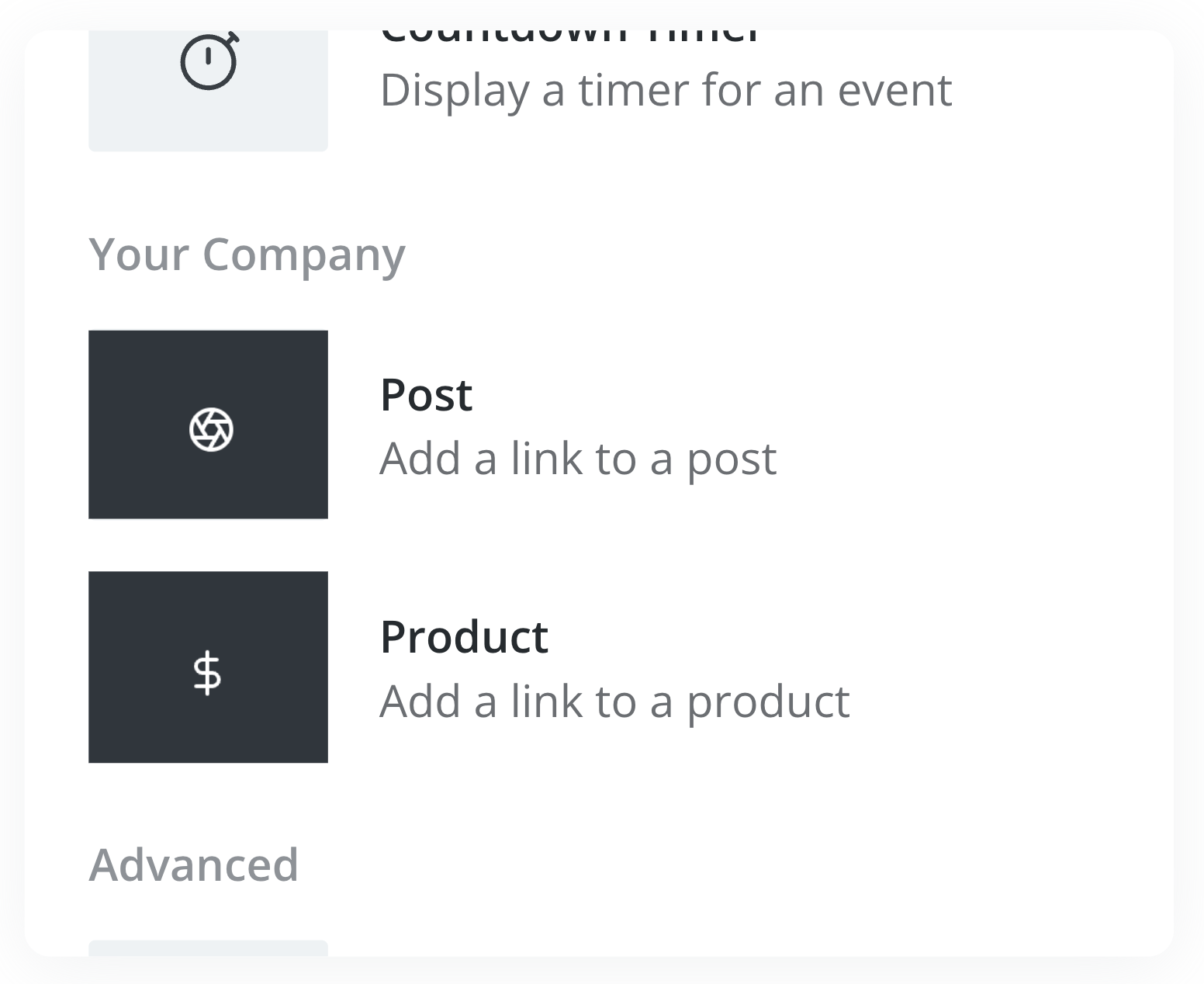Example content block insertion menu
Example content block insertion menu
Example sidebar configuration
Example sidebar configuration
Name
The pluginname is the user-facing name for your block. In the content block insertion menu example above, “Post”, and “Product” are names. It will appear in the editor’s element menu, and also in the breadcrumbs at the top of the sidebar when your block is selected. Your name should be short, ideally one or two words.
Description
Thedescription is a short phrase describing your block. It will appear underneath the name in the element menu. In the example above, “Add a link to a post” and “Add a link to a product”.
Sort order
If you offer multiple elements, thesort order determines their placement. In the example above, “Post” has a sort order of 0, while “Product” has a sort order of 1.
Icon
Theicon is an image for the node to be displayed alongside the name and the description. A monochrome SVG is recommended. PNG, GIF, JPEG extensions are also supported. The recommended size is 150x120px.
Request URL
TheRequest URL is the URL of an endpoint on your server that returns an HTML string. This endpoint’s job is to generate the HTML for your element to be rendered in the email editor.
You’ll generate this HTML based on the settings you’ve defined for your block (outlined in the plugin settings page). Once a user completes all required settings, we’ll make a POST request to your Request URL. The request will contain a settings object with the user’s selected values for each of your settings:
Request URL should respond to this request with a JSON object containing an html key:
errors array of strings. You may add as many errors to this array as you’d like:
Settings JSON
This field allows you to configure the sidebar settings for your element. It should be an array of objects; one object for each setting. For instance, this would be the JSON configuration for a plugin with two settings: “Title” and “Color”.type determines the UI rendered (such as a text input or a color picker); all available options are listed under the plugin settings page.
The name for each setting is used as the key in your HTML request:


